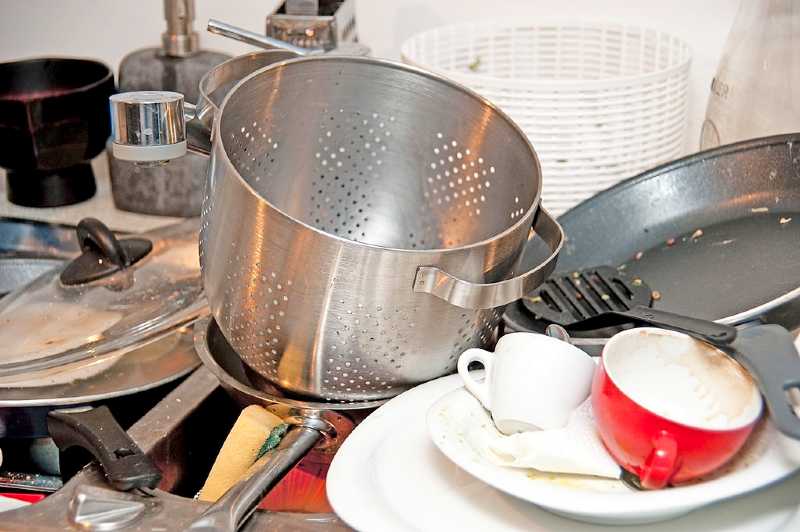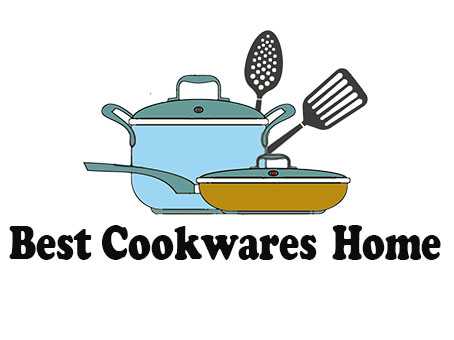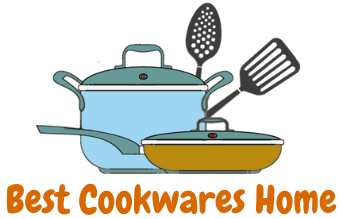
Are you in search of How to clean discolored stainless steel pots? In this article your every question will be solved. Stainless steel cooktops are a wonderful addition to the kitchen. Not only do they look sleek, but they also add an air of sophistication to your cooking space. However like much other cookware, the discoloration of stainless steel due to heat is curable, so do not worry about it.
Cleaning stubborn scratches on your cooktops can be quite difficult especially if the scratches look discolored.
The stainless steel cookware is long-lasting and durable but they are easy to stretch. Scratches on stainless steel cookware may damage the surface, especially if your utensils have pointy edges. So it is important to learn how to clean discolored stainless steel pots.
Not paying sufficient attention to cleaning and caring for these pots regularly can give them discolored spots, thus rendering them useless. Here’s how to clean discolored stainless steel pots and pans.
Summary
Step by Step Guide to Clean Discolored Stainless Steel pots
Black stains on stainless steel are a problem; it’s not something that you want to see on your pots, especially if you bought them from a store. Burnt edges on a pot are one of the most annoying things because it’s difficult to remove and requires a lot of patience since you need to scrub hard for removing the stain.
If like me, you have ever burned food in a stainless steel pot, you also know the burned marks that it leaves behind. There are different methods for how to remove burnt stains from stainless steel cookware. In this article, you will find out how to remove stains from stainless steel and keep them from returning
1. Remove Burnt Food from the pan
Stainless steel cookware is a great product that doesn’t rust and holds up well to heat. It does show signs of wear and tear, however. After using your pot or pan regularly, food may stick to the surface and becomes hard to remove. This is especially true if you leave the food sitting on the stainless steel for a long time and it dries out. Here is an easy way to remove burned food from your stainless steel cookware that will not ruin the surface itself.
Make sure you have removed and thoroughly cleaned the Burned food from inside the pan. Put water in and bring to a boil leaving it on high heat. As soon as bubbles start to come up through the water you know it is beginning to work. After a while, you will notice the water starting to turn black at which time you can drain it out.
2. Cleaning Discolored Pots with Tomato Sauce and Baking Soda
Removing the discoloration of pots with tomato sauce is easy with a little preparation. If you have a large amount of sauce, boil it for several minutes until it becomes slightly thicker. Then remove from heat and allow to cool until it is room temperature. Now You need to know how to clean pots and pans with baking soda, Mix one tablespoon of baking soda with one cup of water and rub together until it is damp. Place a few drops of this mixture on a dampened piece of paper towel; thoroughly rub the pan with the paper towel until the stain disappears.
To clean up discolored stainless steel pots, the main ingredient you need is ketchup. First, pour out all the old ketchup or rinse it out with warm water. Then fill the pot with fresh ketchup. Allow it to simmer for about ten minutes on the stovetop on low heat. Remove the pot from the burner and let it cool down a bit completely before rinsing it out with clean water and drying it off completely. You should see that your pot has regained its luster.
3. Cleaning Discolored Pots with Salt
Most stains come from foods and oils accumulated on the sides of the pot after storage, so frequent cleaning is important. Removing the discoloration of pots with salt, salt is most effective to clean the pots.
Take 2 spoons of salt and add in the water to make a solution. Now take a soft cloth such as a towel cloth, and dip that cloth into the salty solution. Now start scrubbing the stainless steel pot softly and slowly, you will see the stains will be finished in just a few minutes. after scrubbing the pots and pans, wash the pots with clean water and keep them dry for the next use.
4. Cleaning Discolored Pots with Vinegar
Vinegar, also known as acetic acid, is most commonly found in household cleaners and recipes for salad dressings. However, vinegar has several uses around the house that can be useful to homeowners who are looking for ways to make their lives easier. For example, vinegar can be used to bathe your dog, remove scale buildup from sinks and remove discoloration from stainless steel pots.
This common ingredient can help restore the luster to your stainless steel pots. With just a little elbow grease and some vinegar, you can erase stains and keep your pots looking just as shiny and new as the day you bought them.
This process is an excellent method for removing discoloration from stainless steel pots and will give you the answer to how to clean stainless steel pans with vinegar. The vinegar destroys any germs or bacteria inside the pot and will not harm the stainless steel itself. If you are concerned about food safety, you should try using a non-vinegar solution instead of boiling water.
5. Cleaning Discolored Pots with Warm Water
Discoloration can easily ruin the look of your cookware, but no more! Cleaning discolored pots with warm water is a simple and inexpensive way to bring back the shine. Just boil water on the stove and pour it into a discolored pot or pan. The stains and heat will cause the discoloration to loosen the pot. Next, use a soft cloth to wipe away any remaining residue. After cleaning, run the pots through a normal wash cycle and enjoy your shiny pots and pans once again.
You may also Read: How to Clean Pots and Pans to Look like New
How to clean outside of stainless steel pans?
If you are in a situation where you should think of how to clean the outside of stainless steel pans it means that you have consumed all your meal and now there is some greasy deposit that remains only on the pan’s outer surface. There are many recipes on how to manually clean and polish pan surfaces.
1. First empty the pot after cooking
First wash it in water, If the pan contains food residues first rinse it thoroughly. burnt food and baked in a saucepan with warm water, grease with a paper towel, then rinse the residue of grease.
You can use a wire brush to scrub the pot or sprinkle some baking soda inside to remove food residue. For stubborn stains, pour vinegar on the stain in the pot, and then quickly add water until it’s halfway up the pot, use a brush to scrub. Or you can use a plastic scouring pad to get rid of the residue on top.
2. Rub the Outside of stainless steel pot
The outside bottom of the pot or pan must be completely dry. Next, you will use a scouring pad to clean it. The scouring pad is soft enough and does not leave scratches on the surface, but it is rough enough to remove stains and debris.
Now just wet a sponge and fill it up with a little dishwashing soap. With your fingers, rub the side of the pot. Wash with water immediately after wiping. This helps prevent water stains by removing any food particles or grease that could cause stains.
If your pots are very old you should avoid using a hard scrubbing pad or steel wool.
3. Scrub the Bottom of pots
Completely scrub all food scraps from the bottom of your cookware with a brush or scrubbing pad. Be careful to prevent any possible scratching during the process.
4. Wash the Stainless Steel Pot
After scrubbing and cleaning now take clean water and wash your pots thoroughly. So that no food or grease residue remains behind in the pot.After washing keep the pot dry for the next use.
General tips to care for Stainless Steel Pots and Pans
It might seem like stainless steel is quite durable, but you can actually mess it up pretty badly if you aren’t careful. Here are some general rules of thumb to ensure that your pots keep their shine and don’t start rusting or degrading quickly.
Important Considerations
1. Water spots are “discolorations” that appear on the exterior surface of stainless steel pots. These discolorations are not staining, but rather a chemical reaction between the metal and an acidic substance, such as fruit juice or tea, over time. To prevent these water spots, simply dry your stainless steel pots immediately the following use to remove all traces of moisture
2. Do not add salt to the pot or pan until the water is boiling. Heating salt in an unheated pot can cause pitting corrosion, which leaves little dents in your pans and takes away from their aesthetics. Also, never add acidic ingredients like tomatoes at the beginning of cooking, because they’ll eat away at the stainless steel if you do.
3. Always preheat the pan before adding any type of oil. Doing so will ensure the food isn’t being cooked in a layer of oil and is less likely to stick. When cooking with stainless steel pots, cold food is more likely to stick to the surface. The reason is that when a pot is cold, the skillet’s surface will contract rapidly after contact with the stovetop. This makes the pan very close to its size at room temperature.
4. The secret is never to use cold water to clean it immediately after cooking. This is because a sudden temperature change can cause warping or disfigurement of the pan. Always wait until the pan has cooled completely before washing it.
5. To prevent your stainless steel pots from getting scratched, avoid using steel wool or other harsh scrubbers or cleaners on them. Scratching your Stainless Steel pots, pans and cookware will make them look old and dull.
Is discolored stainless steel safe?
Yes, stainless steel pots and pans are still safe to use even if they are discolored. They’re not discolored – what is happening is that the metal particles from within the food you’re cooking are reacting to the heat of the pan and forming chromium oxide on the surface of your pots and pans. This effect is one of the most common reasons for black stains on your stainless steel cookware.
How Stains are Formed over the Pots and Pans?
Many people cook directly on their stainless steel pots and pans because they like the way it looks, or because the surface is so easy to clean. But what most people do not know is that after you warn them and let them heat up, some of that burnt food might penetrate the pores of the metal, making it hard to clean. That’s because stainless steel is a porous material with microscopic hexagonal holes in its surface.
What is the best cleaner for pots and pans?
Of course, everyone wants to use best cleaner for stainless steel pots and pans. There is a surplus of opinions on the best cleaner for stainless steel cookware. With that being said, there’s nothing better than using a custom-made cleaner that is designed specifically to bring the sparkle back to your stainless steel pots and pans. It’s worth noting that these cleaners are also safe for other items in your kitchen
Conclusion
Most of the chefs are Curious about how to clean pots and pans to look like new
Stainless steel pots are very durable. However, over time they tend to lose their shiny look and you might even see rust or discoloration. It is especially common if left in the kitchen cabinet for too long.
You can clean your stainless steel pots by using the methods I mentioned above. If you are not sure about how to clean discolored stainless steel pots, then you should choose a natural way to clean them.
Cleaning discolored stainless pots is not a difficult job and does not require cleaning agents that can eat away it’s coating. You must avoid using bleach or any other caustic cleaner regularly. The smell of chlorine fumes produced by some cleaners can give a food a metallic taste. An acidic substance like lemon juice, however, is safe to use as it has no adverse effect on cookware.
Read More:
How to Use Stainless Steel Frying Pan
How long does stainless steel cookware last?
Best Non Stick Pans for Induction Cooker
How Long Do Stainless Steel Pans Last?

Hi, Welcome to our Blog. We are a team of Professional Blogger and expert in Cookware, Kitchen Appliances. We Work for the latest Reviews for Cookware, Kitchen Appliances. You can give us your kind Suggestions for improvements of Blogs, Thank You
